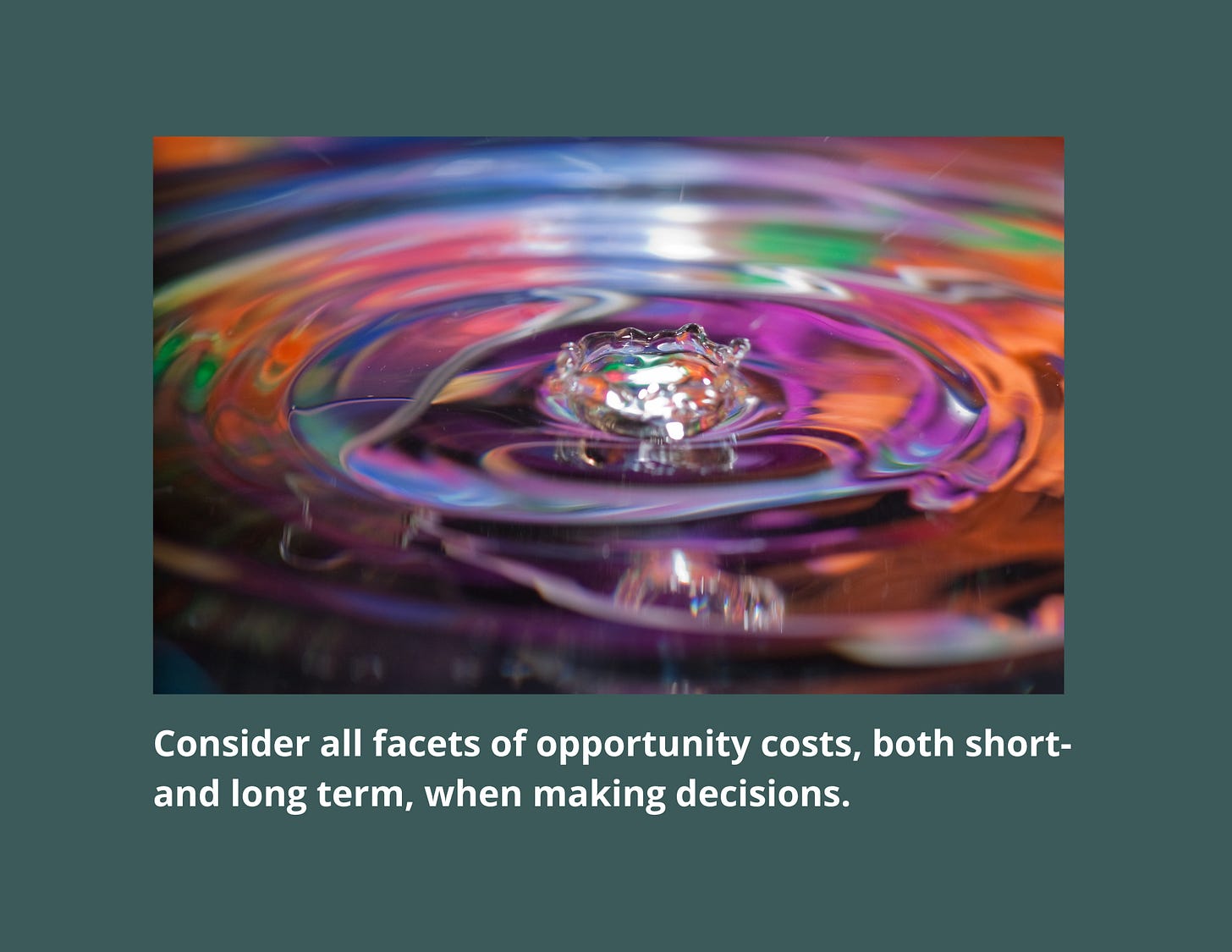What Are You Choosing & Giving Up?
Understanding Opportunity Cost When Choosing a Path
Takeaways
Opportunity cost includes both financial and non-financial factors as well as short-term and long-term influences.
Using tools like spreadsheets can help clarify financial trade-offs but can be complemented by reflection on personal goals.
One of my adult children is in the midst of making an important career decision: a job right now or grad school? The considerations go beyond money, but there is a financial component, and as you can imagine, there’s a spreadsheet involved.
He’s not merely determining whether he can afford the program but weighing the opportunity cost of each choice. What’s interesting to me is that he’s considering both financial and the life/career opportunity costs.
Defining Opportunity Cost: More Than Just Dollars
This seems like a good time to consider what opportunity cost means.
Opportunity cost is the value of whatever you’re giving up when you choose one path over another. It’s not just about dollars—it’s about time, energy, valuable experiences, and long-term results. It considers what you’re sacrificing now (and potentially in the future) for the chosen path, one that might offer more enjoyment, fulfillment, or flexibility, but could come also with a less predictable and lower return.
The Financial Piece: Income, Savings, and Investments
At first glance, the financial opportunity cost calculations may seem the most straightforward: compare expected earnings and the amount of probable savings, subtract one from the other, and model how those savings-turned-into-investments grow over time.
Real life complicates this calculation. Income and property taxes, cost of living, employee benefits, and lifestyle choices, and even the possibility of outside consulting or gig work all influence financial outcomes.
Psychic Costs: Meaning and Well-being
Beyond money, there are also psychic opportunity costs: What kind of work will be more personally meaningful? Which path allows for greater impact? Could one path lead to more professional growth or greater autonomy? Even if the pay is lower—or roughly equivalent—one option may lead to work that’s more enjoyable, contributing to long-term mental, physical, and emotional well-being.
Money solves many problems. But it doesn’t solve all of them. A well-paying job that feels stifling or disconnected from purpose can carry hidden costs, just as a more fulfilling path may carry financial risks or delays in stability.
The Role of Uncertainty
Further complicating matters is uncertainty. No spreadsheet or decision framework can fully account for the potential growth, stability, and impact—financial and otherwise—of one decision over another.
Defining What’s Most Important
I find myself returning to what prompted these reflections. What are we really trying to optimize? Are we seeking money, meaning, or something else? And perhaps just as important: How much of each do we truly need?
Financial impact is often the easiest to measure. But it makes sense to weigh all the factors relevant to each path.
What factors have mattered most to you when making big decisions?



This was a timely read for me now Julie. Weighing the “Opportunity cost” is a better path than running after the next shiny possibility. Thank you!